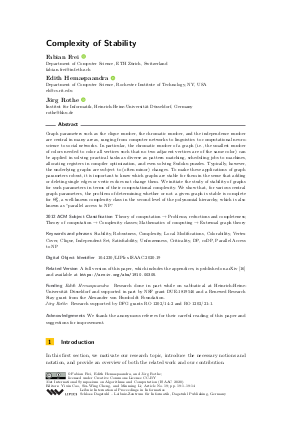LIPIcs.ISAAC.2020.19.pdf
- Filesize: 483 kB
- 14 pages

 Creative Commons Attribution 3.0 Unported license
Creative Commons Attribution 3.0 Unported license









































Feedback for Dagstuhl Publishing